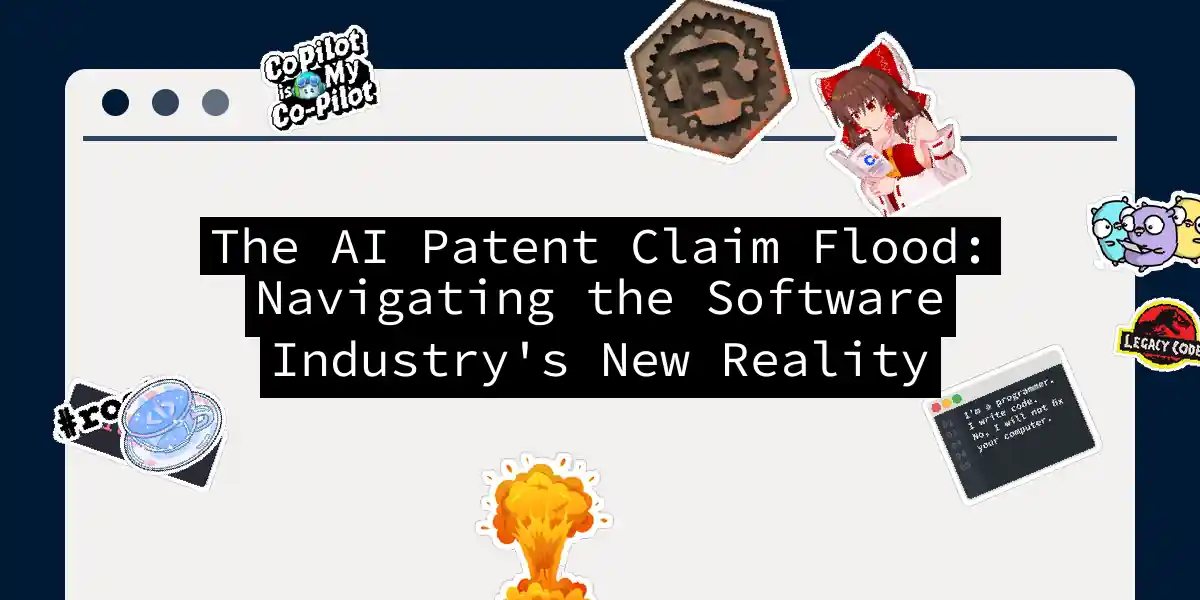Introduction to AI-Generated Patent Claims
In the software industry, innovation is the lifeblood that keeps companies ahead of the curve. However, with the advent of AI-generated patent claims, the landscape is changing rapidly. AI tools can now analyze vast amounts of data, identify patterns, and draft patent claims faster and more accurately than ever before[1]. This shift raises both opportunities and challenges, as the sheer volume of AI-generated claims could flood the patent system, impacting how software companies protect their intellectual property.
Benefits of AI-Generated Patent Claims
AI-assisted patent claim drafting offers several benefits:
Speed and Efficiency: Traditional patent drafting can take weeks or even months. AI tools can produce initial drafts in minutes, freeing up professionals to focus on strategic decisions[1].
Accuracy and Consistency: AI minimizes errors by meticulously analyzing prior art, ensuring consistent claims across applications[1].
Cost-Effectiveness: AI tools are scalable, making them accessible to small and medium-sized enterprises (SMEs) without compromising quality[1].
Enhanced Innovation Support: AI can suggest alternative claim structures, supporting iterative innovation processes[1].
Global Accessibility: AI tools can assist in drafting claims compliant with multiple jurisdictions, including translation features for international applications[1].
Challenges of AI-Generated Prior Art
AI-generated prior art presents new challenges:
Enablement Requirement: AI-generated solutions may lack experimental data, failing to meet the enablement requirement for prior art[3].
Authenticity and Reliability: Establishing standards for AI-generated evidence is crucial in patent litigation[3].
Novelty and Non-Obviousness: AI can generate numerous variations, complicating the proof of novelty and non-obviousness[3].
Impact on the Software Industry
The software industry is particularly affected due to its rapid innovation cycles and reliance on intellectual property protection. AI-generated patent claims can:
Increase Patent Filings: More companies may file patents to protect their innovations, potentially leading to a surge in patent applications.
Complicate Patent Litigation: AI-generated prior art can make it harder to prove the novelty of inventions, leading to more complex legal battles.
Change Business Strategies: Companies may need to adapt their IP strategies to include AI-generated claims, focusing on quality over quantity.
Navigating the AI Patent Claim Landscape
To navigate this new reality, software companies should consider the following strategies:
Leverage AI Tools Wisely: Use AI for drafting and analysis but ensure human oversight to maintain quality and relevance.
Conduct Thorough Prior Art Searches: Include AI-generated content in searches to avoid potential legal challenges.
Focus on Quality Over Quantity: Prioritize meaningful, well-crafted patent claims rather than flooding the system with AI-generated ones.
Stay Informed About Legal Developments: Keep up with evolving legal frameworks regarding AI-generated inventions and prior art.
Example: Using AI for Patent Analysis
Here’s an example of how AI can be used for patent analysis:
Conclusion
The rise of AI-generated patent claims is transforming the software industry’s approach to intellectual property. While AI offers efficiency and accuracy, it also introduces complexities around prior art and patent litigation. By embracing AI tools strategically and staying informed about legal developments, software companies can navigate this new landscape effectively. The future of patent law will likely involve a balance between leveraging AI’s capabilities and preserving human insight, ensuring that innovation remains protected and encouraged.
As we move forward, it’s crucial to address these challenges proactively, ensuring that the benefits of AI in patent drafting are realized without overwhelming the patent system. The software industry, known for its adaptability and innovation, is poised to lead the way in this evolving legal landscape.
